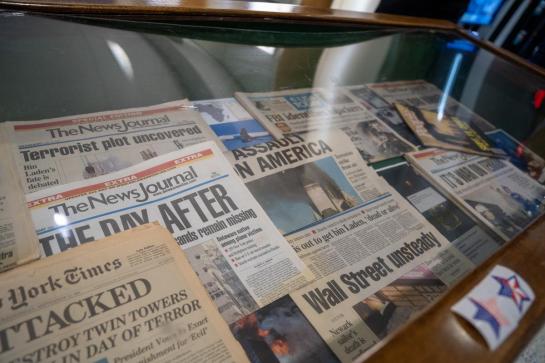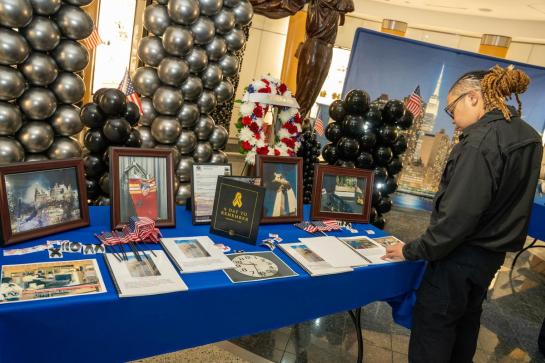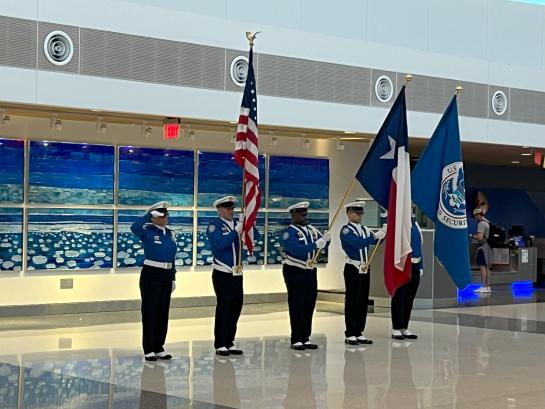Today, Houston Airports joined the Transportation Security Administration (TSA) and the airport community in observing the 23rd commemoration of the terrorist attacks that occurred in the United State of America on September 11, 2001. Remembrance events happened at George Bush Intercontinental Airport (IAH) and William P. Hobby Airport (HOU).
The TSA Honor Guard led ceremonies inside the HOU Ticketing Lobby and the IAH Terminal A Ticketing Lobby. The TSA also organized a unique gallery of items collected in the days after 9/11. The display is available to passengers today at IAH Terminal C in front of the George H.W. Bush statue and exhibit.

On September 11, 2001, terrorists killed nearly 3,000 people and injured more than 6,000 others in the worst attack against the homeland in our nation’s history. Nineteen terrorists from al-Qaeda hijacked four commercial airplanes, deliberately crashing two of the planes into the upper floors of the North and South Towers of the World Trade Center complex in New York City and a third plane into the Pentagon in Arlington, Virginia. The Twin Towers ultimately collapsed because of the damage sustained from the impacts and the resulting fires. After learning about the other attacks, passengers on the fourth hijacked plane, Flight 93, fought back, and the aircraft crashed into an empty field in Shanksville, Pennsylvania, about 20 minutes by air from Washington, D.C.

More than two decades later, Houston Airports joins the world, remembering the attacks and the innocent lives lost. Today’s TSA Honor Guard ceremony coincided with a national moment of silence at 7:46 a.m. (CST) - the time the first plane struck the first of two towers at the World Trade Center.
The TSA honor guard, standing at attention, led airport employees and travelers at Bush and Hobby airports in a moment of silence initiated by the ringing of a bell four times in remembrance of the four hijacked airlines. The ceremony closed with the playing of the national anthem.

How Airport Travel Has Changed Since 9/11
Twenty-three years after 9/11, TSA’s security procedures have advanced into a sophisticated, intelligence-driven, multi-layered operation. By collaborating with both public and private sector partners and engaging with the traveling public, TSA established a benchmark for excellence in transportation security. The agency continuously reviews and adapts its security protocols to address emerging threats.
Today’s events are a powerful reminder of the resilience and dedication that have shaped modern aviation security. Here is an overview of how air travel has significantly transformed after the September 11 attacks:
Enhanced Security Procedures: The TSA introduced comprehensive screening processes, including the requirement to remove shoes, belts, and electronics and the use of full-body scanners at security checkpoints.
Advanced Security Measures: Security has become more robust, incorporating thorough background checks for airport staff, advanced baggage screening, and technologies like biometric scanners and facial recognition.
Homeland Security Integration: The creation of the Department of Homeland Security (DHS) has improved coordination across national security efforts, focusing on preventing and responding to threats more effectively.
Increased Public Awareness: There is greater public awareness of security protocols, with ongoing education and emergency drills designed to enhance vigilance and preparedness among travelers and airport staff.
Legislative and Policy Updates: New laws and policies, including the Patriot Act and various aviation security regulations, have been implemented to strengthen security measures and safeguard against potential threats.



